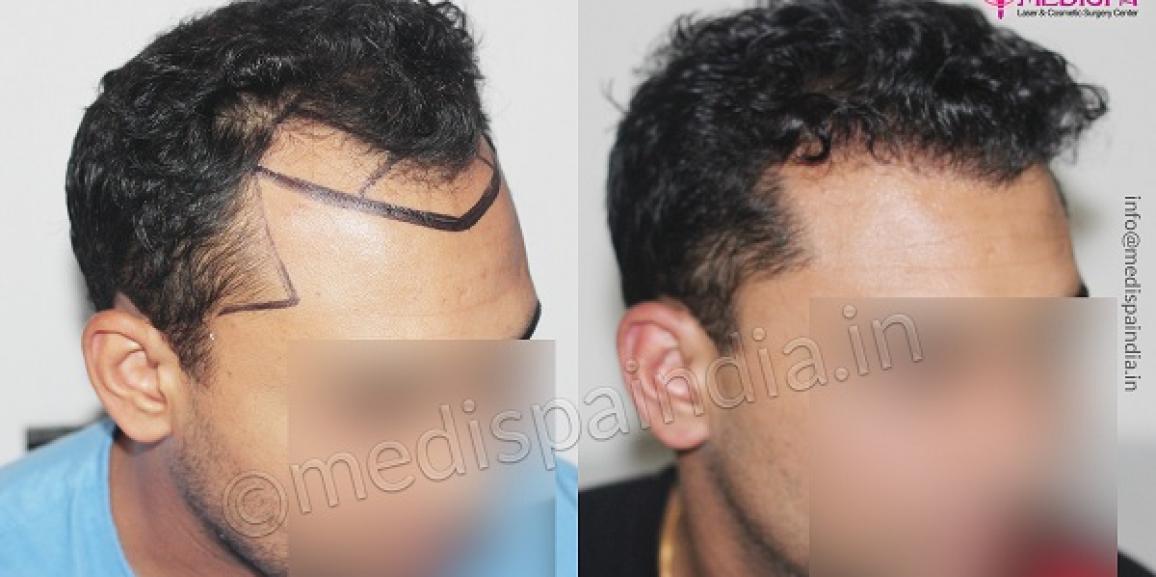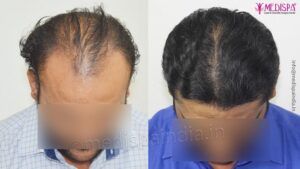
Many parts of hair transplantation are mysterious and unknown, leaving hair loss sufferers perplexed when choosing a treatment. Online portals frequently minimise the treatment’s importance, portraying it as a normal cosmetic operation with no risks or repercussions.
Hair transplantation is a minimally invasive surgical procedure that involves harvesting hair grafts from the donor area under local anaesthesia and transferring these follicular units to the bald area of the recipient. This procedure is extremely precise and delicate, and it requires the assistance of a qualified hair transplant surgeon to be completed correctly and securely.
The procedure is a surgical procedure that requires a deft surgical hand, as well as significant decision-making skills, such as method selection and donor location selection, among other things. Before getting treatment, patients are usually advised to seek the services of the best hair transplant surgeon in India. Hair transplant in India has become increasingly popular over the last decade or two as demand has exceeded supply. Identifying duly certified and skilled doctors is a key first step toward a successful hair transplant in the midst of all the semi-skilled commercial clinics providing hair transplant treatments.
The Medispa hair transplant clinic in Jaipur is one of the most popular destinations for both local and foreign hair transplant patients. Hair transplant tourism is attracted to medispa clinics because of the excellent quality of services mixed with a touch of comfort at a low cost. Dr. Suneet Soni is well-known for his remarkable surgical abilities and aesthetic vision, which result in exceptionally natural outcomes. His artistic abilities set him unique from the city’s other hair transplant clinics.
Hair transplant techniques
Hair transplantation is done utilising two techniques that differ in terms of graft harvesting procedures. These procedures are primarily determined by the quantity of follicular units necessary for the treatment in a given patient.
FUT (strip technique) hair transplantation:
The FUT hair transplant process involves removing a thin strip of skin from the donor area, primarily the back and sides of the head, and sending it to the graft separation room for further dissection and retrieval of individual grafts. After that, the collected grafts are sown at the desired recipient bald location. Everything is done under high loop magnification, from harvesting to transplantation.
Hair transplantation using the FUE method (Follicular unit extraction)
Individual follicular units comprised of follicular grafts and surrounding tissues are extracted from the donor location and transplanted at the recipient bald site using the FUE hair transplant technique. FUE requires a high level of precision because it is practically a blind punching method; otherwise, the follicular grafts will be damaged.
How safe is hair transplant?
Hair transplantation is unquestionably a safe treatment. Hair roots are harvested from the scalp’s extremely superficial skin layers, thus there will be no adverse effects on vital areas.
However, hair transplantation is a complex surgery that requires skilled hands. If the surgery is performed by a novice surgeon, the procedure is likely to fail and result in negative results.
What are the safety protocols and practises for hair transplant?
- Choose the correct hands to do the procedure: Hair transplant services are available for a reasonable price these days. To stay successful, these lower-cost clinics cut corners on treatment quality. They frequently hire just technicians to conduct hair transplants, who receive only a few days of instruction and have no prior experience. As a result, the hair transplant is quite likely to fail.
You should exercise extreme caution when selecting the best hair transplant surgeon in India since the appropriate hands ensure a successful treatment. For the safest and most effective hair transplant therapy, choose a surgeon who is highly qualified, experienced, and knowledgeable.
- Maintain the highest level of hygiene: Hair transplantation is a surgical process that requires aseptic conditions. To minimise infection, it is critical to maintain the highest level of hygiene during hair transplantation. Hair transplant cleanliness should not be disregarded, as there have been reports of severe life-threatening infections following hair transplants at less expensive clinics.
- Emergency measures on standby: When doing a hair transplant, it is critical to have emergency measures on hand. It ensures patient safety and provides you with a hair transplant that is free of complications.
- Use high magnification during the operation: The hair transplant procedure should be done under high magnification. Because hair follicles are so small that dealing with them with the naked eye is impossible, it’s critical to complete the treatment accurately with a high magnification, high-quality microscope.
Hair transplantation is a very successful surgery, but it is also quite precise. As a result, it’s critical to follow hair transplant safety regulations and practises. As a result, it’s critical to concentrate on the quality of hair transplant treatment you’ll receive by choosing the best hair transplant.
Why should you go to a Medispa?
- A highly competent staff, as well as the largest team
- A successful hair transplant with good outcomes
- Dr. Suneet Soni, a world-renowned surgeon 10000+ successful hair transplant stories
- Over 20 years of industry expertise
- Low-cost hair transplants with guaranteed global quality







